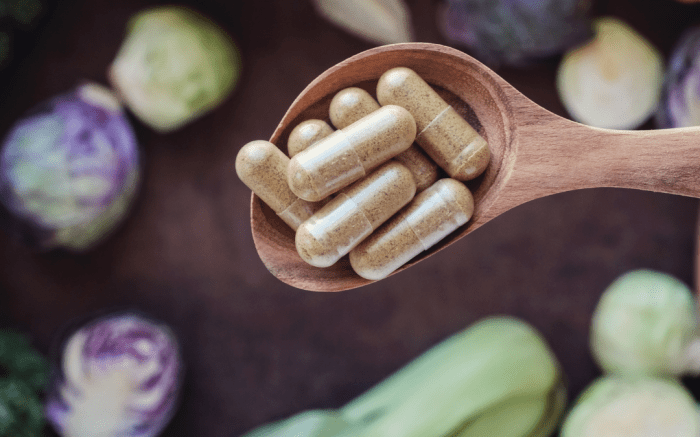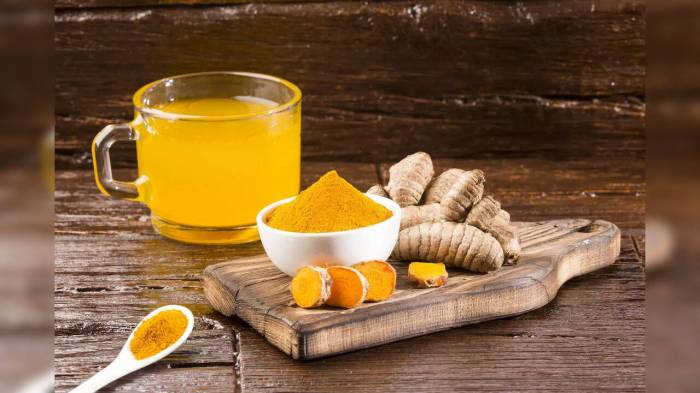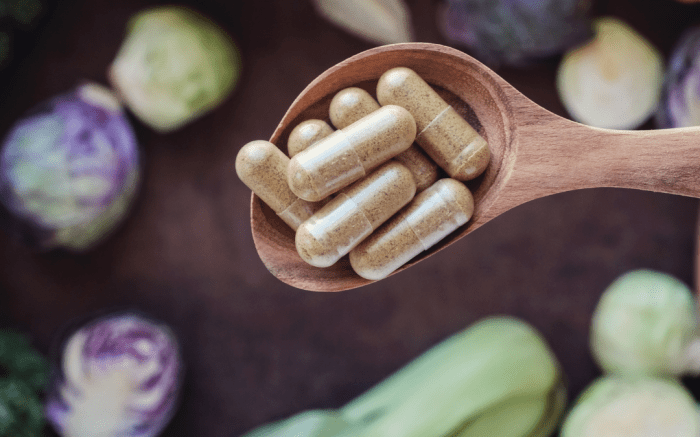Natural remedies for laryngitis offer a range of potential solutions for soothing a sore throat and managing the discomfort of laryngitis. This guide explores various approaches, from simple home remedies to herbal infusions and dietary changes. Understanding the causes, symptoms, and potential complications of laryngitis is crucial before trying any remedies. We’ll delve into the historical use of natural remedies, discuss potential benefits and drawbacks, and emphasize the importance of consulting a healthcare professional before embarking on any treatment plan.
Laryngitis, an inflammation of the voice box, can range from mild discomfort to severe hoarseness. Common causes include viral infections, overuse of the voice, and environmental irritants. Understanding the difference between acute and chronic laryngitis, along with their respective symptoms and durations, is essential for effective management. This exploration of natural remedies will cover everything from gargles to herbal teas, dietary recommendations, and lifestyle modifications to help alleviate symptoms and promote healing.
Introduction to Laryngitis: Natural Remedies For Laryngitis
Laryngitis is a common inflammation of the larynx, the voice box located at the top of the trachea. This inflammation can disrupt the vocal cords’ normal function, leading to hoarseness or a complete loss of voice. Understanding the causes, symptoms, and different types of laryngitis is crucial for appropriate diagnosis and management.Laryngitis arises from various factors, often involving irritation or infection of the vocal cords.
This inflammation can be triggered by a range of factors, from viral infections to environmental irritants. Understanding the specific causes can guide preventative measures and treatment strategies.
Causes of Laryngitis
A multitude of factors can lead to laryngitis. Viral infections are a frequent culprit, as viruses like the common cold or the flu can easily spread to the vocal cords. Bacterial infections, while less common, can also trigger inflammation. Overuse of the voice, such as excessive shouting or singing, can strain the vocal cords and lead to inflammation.
Natural remedies for laryngitis can be surprisingly effective. For example, gargling with warm salt water can soothe a sore throat, and plenty of fluids are key. Interestingly, incorporating certain fruits into your diet can also contribute to overall health and well-being, like the delicious and nutritious options found in the best fruits for weight loss guide.
Ultimately, a holistic approach, including these natural remedies, can help you recover from laryngitis faster and more comfortably.
Environmental irritants, such as smoke, dust, or chemicals, can also irritate the larynx. Allergies and reflux can also be contributing factors.
Symptoms of Laryngitis
The most prominent symptom of laryngitis is hoarseness or a change in the voice. This can range from a slight raspy tone to a complete loss of voice. Other common symptoms include a sore throat, a scratchy feeling in the throat, and difficulty swallowing. In some cases, coughing and a feeling of tightness in the chest may also accompany the symptoms.
Acute vs. Chronic Laryngitis
The following table differentiates between acute and chronic laryngitis, highlighting key distinctions in symptoms and duration.
| Characteristic | Acute Laryngitis | Chronic Laryngitis |
|---|---|---|
| Symptoms | Hoarseness, sore throat, scratchy throat, mild cough, possible difficulty swallowing. Symptoms typically resolve within a few days to a few weeks. | Persistent hoarseness, chronic cough, possible difficulty breathing. Symptoms often last for several weeks or months. |
| Duration | Usually resolves within 1-3 weeks. | Can last for months or even years, recurring or persistent. |
| Causes | Viral infections, environmental irritants, overuse of voice. | Chronic vocal overuse, allergies, gastroesophageal reflux disease (GERD), certain medical conditions. |
Understanding Natural Remedies
Natural remedies for laryngitis have been used for centuries, drawing on traditional knowledge and the healing properties of various plants and substances. While they can offer potential relief and support the body’s natural healing processes, it’s crucial to approach them with a balanced perspective, acknowledging both their potential benefits and limitations. A key aspect is understanding that natural remedies are not a substitute for professional medical care.Natural remedies often work by targeting the underlying causes of laryngitis, such as inflammation and irritation, through various mechanisms.
They may offer symptomatic relief by soothing the throat and reducing discomfort, potentially aiding in recovery. However, the effectiveness of these remedies can vary significantly depending on the individual, the severity of the condition, and the specific remedy used.
Potential Benefits of Natural Remedies
Natural remedies can offer potential benefits in managing laryngitis symptoms. They often promote a gentler approach to recovery, focusing on supporting the body’s natural healing processes. Some remedies may help reduce inflammation, soothe the throat, and potentially shorten the duration of symptoms. These benefits are often attributed to the compounds and properties present in the natural ingredients, such as anti-inflammatory or antimicrobial components.
Potential Drawbacks of Natural Remedies
While natural remedies can be beneficial, potential drawbacks exist. They may not be effective for everyone, and some remedies can have adverse interactions with medications or underlying health conditions. Furthermore, the quality and purity of natural products can vary, making it challenging to guarantee consistent results. It is essential to understand that these remedies are not scientifically proven cures for laryngitis and may not be appropriate for all individuals.
Importance of Consulting a Healthcare Professional
Before using any natural remedy for laryngitis, it is crucial to consult with a healthcare professional. A doctor can assess the severity of the condition, rule out any underlying medical issues, and determine if natural remedies are suitable for the specific situation. This precaution is critical to ensure that the remedy does not interfere with other treatments or worsen the condition.
A healthcare provider can also offer personalized advice and monitor the progress of the condition.
Examples of Historical Sore Throat Remedies
Traditional cultures have relied on a variety of natural remedies for sore throats. These remedies often involve readily available ingredients found in nature. Some examples include:
- Honey: Known for its soothing and antibacterial properties, honey has been used for centuries to alleviate sore throats. It coats the throat, providing a layer of comfort and potentially reducing inflammation.
- Saltwater gargles: A simple and effective remedy, gargling with warm saltwater can help soothe the throat and reduce inflammation. The salt acts as a natural antiseptic, potentially helping to kill bacteria and viruses that may be contributing to the condition.
- Herbal teas: Various herbal teas, such as chamomile, licorice, and elderflower, are believed to possess soothing and anti-inflammatory properties, potentially alleviating sore throat discomfort. These teas can be prepared at home using readily available ingredients.
It’s important to remember that while these remedies have been used traditionally, their effectiveness may vary. It is vital to consult a healthcare professional for proper diagnosis and treatment of laryngitis.
Common Natural Remedies
Natural remedies for laryngitis often focus on soothing the irritated throat and reducing inflammation. Many involve gargles and other oral treatments, which can provide significant relief. These methods, when used in conjunction with rest and hydration, can complement conventional medical approaches.
Gargling Solutions
Gargling with warm, soothing solutions can help to relieve throat pain and inflammation associated with laryngitis. The act of gargling helps to mechanically remove irritants and potentially loosen mucus. Different ingredients offer various benefits, and the best choice often depends on individual preferences and sensitivities.
Commonly Used Gargles
A variety of ingredients can be used in gargles for laryngitis. Here are some of the most common and their preparation and potential benefits.
- Saltwater Gargle: A simple and widely recommended remedy, saltwater gargles can help soothe inflammation and reduce mucus. Dissolve 1/2 teaspoon of table salt in 8 ounces of warm water. Gargling with this solution for 30 seconds several times a day can provide comfort. Saltwater effectively draws out irritants and helps reduce inflammation. The warm temperature also helps to relax the throat muscles.
So, battling laryngitis? Natural remedies are a great place to start. While some swear by honey and lemon, I’ve found that focusing on a healthy diet can also make a real difference. For instance, a high protein, high-fat breakfast, like the ones discussed in this helpful article about how high protein fat breakfast can reduce a1c , can potentially boost your overall health, which can indirectly support your body’s healing process.
This, combined with rest and other natural remedies, might just be the ticket to a speedy recovery from laryngitis.
- Honey Gargle: Honey’s antibacterial properties may help reduce inflammation and soothe a sore throat. Mix 1 tablespoon of honey with 8 ounces of warm water. Gargling with this solution can be particularly soothing, though it’s essential to use honey cautiously, especially in children. Honey should not be given to infants under 1 year of age. The combination of honey and warm water creates a soothing effect that helps alleviate throat discomfort.
- Lemon and Warm Water Gargle: Lemon juice’s acidity may help to kill bacteria, and the warm water provides soothing relief. Squeeze the juice of half a lemon into 8 ounces of warm water. Gargling with this solution is generally well-tolerated and can help alleviate inflammation.
- Herbal Tea Gargle: Certain herbal teas, such as chamomile or licorice root, possess soothing properties that can alleviate laryngitis symptoms. Brew a cup of herbal tea and let it cool slightly before gargling. Herbal teas, depending on the type, can offer diverse benefits, including soothing the throat and potentially reducing inflammation.
Comparison of Remedy Effectiveness
While all the listed remedies aim to provide relief, the effectiveness can vary depending on the individual. Saltwater gargles are generally considered a safe and effective first-line treatment due to their simplicity and wide availability. Honey, while potentially beneficial, should be used with caution, especially in children. Lemon, due to its acidity, may be less suitable for individuals with sensitive throats.
Herbal teas offer a more gentle approach, but their effectiveness can depend on the specific herbs used.
Summary Table of Gargles
The following table summarizes the ingredients, preparation methods, and potential benefits of various gargles for laryngitis.
| Gargle Type | Ingredients | Preparation | Potential Benefits |
|---|---|---|---|
| Saltwater | 1/2 teaspoon salt, 8 ounces warm water | Dissolve salt in warm water | Soothing, reduces inflammation, draws out irritants |
| Honey | 1 tablespoon honey, 8 ounces warm water | Mix honey in warm water | Antibacterial, soothing, reduces inflammation (use with caution in children) |
| Lemon | Juice of 1/2 lemon, 8 ounces warm water | Squeeze lemon juice into warm water | Antibacterial, soothing, potential for reduced inflammation |
| Herbal Tea | Chamomile, licorice root, or other herbal tea | Brew herbal tea and cool slightly | Soothing, potentially reduces inflammation (dependent on specific herb) |
Dietary Recommendations
Nourishing your body with the right foods during laryngitis can significantly impact your recovery. A balanced diet that supports healing and reduces inflammation is key. This section delves into specific dietary recommendations, highlighting foods to include and avoid to alleviate discomfort and promote faster healing.
Soothing Foods for Laryngitis
Proper nutrition plays a crucial role in managing laryngitis symptoms. Certain foods and drinks possess inherent properties that can help soothe the inflamed vocal cords and promote comfort. Choosing foods rich in vitamins, minerals, and antioxidants can support the body’s natural healing processes.
- Warm Liquids: Warm liquids, such as herbal teas, broth, and warm water, can help coat and lubricate the throat, reducing irritation and discomfort. Avoid very hot liquids, as they can further aggravate the inflammation.
- Soft Foods: Opt for soft, easily digestible foods like mashed potatoes, yogurt, and cooked oatmeal. These foods are gentle on the throat and can be easily consumed without causing further irritation.
- Fruits and Vegetables Rich in Antioxidants: Fruits and vegetables packed with antioxidants, like berries, citrus fruits, and leafy greens, can support the body’s natural healing process and help combat inflammation.
- Foods Rich in Vitamin C: Vitamin C is a potent antioxidant and immune booster. Foods rich in vitamin C, such as oranges, strawberries, and kiwi, can help strengthen the immune system and speed up recovery.
Foods to Avoid During Laryngitis
Certain foods and drinks can exacerbate laryngitis symptoms. Avoiding these items can help reduce inflammation and promote healing.
- Spicy Foods: Spicy foods and those containing high levels of capsaicin, like chili peppers, can irritate the inflamed throat and worsen discomfort. Avoid them during a laryngitis episode.
- Acidic Foods and Drinks: Acidic foods and drinks, such as citrus fruits (in large quantities), tomatoes, and coffee, can further irritate the delicate lining of the throat. Reducing consumption of these items is recommended.
- Dry Foods: Dry foods can dehydrate the throat and worsen the feeling of scratchiness. Opt for moist and soft foods to keep the throat lubricated.
- Alcohol and Caffeine: Alcohol and caffeine can dehydrate the body, which can further irritate the inflamed vocal cords. Avoid these substances to promote healing.
Dietary Recommendations Table
This table provides a clear overview of soothing and potentially irritating foods during a laryngitis episode.
| Soothing Foods | Foods to Avoid |
|---|---|
| Warm liquids (broth, herbal tea) | Spicy foods (chili peppers, etc.) |
| Soft foods (mashed potatoes, yogurt) | Acidic foods/drinks (citrus fruits, tomatoes) |
| Fruits high in Vitamin C (oranges, strawberries) | Dry foods (crackers, chips) |
| Vegetables (leafy greens) | Alcohol and caffeine |
Herbal Remedies

Harnessing the power of nature’s pharmacy can be a valuable addition to your laryngitis treatment. Many herbs possess soothing properties that can help alleviate inflammation and discomfort in the throat. However, it’s crucial to remember that herbal remedies are not a substitute for medical advice. Always consult with a healthcare professional before incorporating any new treatment into your routine, especially if you have underlying health conditions or are taking other medications.Herbal remedies for laryngitis offer a potential path towards relief, but it’s essential to understand the potential benefits and safety considerations before using them.
The properties of various herbs can help reduce inflammation and promote healing in the throat, potentially easing pain and discomfort. However, individual reactions to herbs can vary, and some may interact with other medications. Therefore, careful consideration and consultation with a healthcare professional are vital.
Common Herbal Remedies for Laryngitis
A wide range of herbs are known for their potential soothing effects on the throat. These herbs often contain compounds that can help reduce inflammation and promote healing. Important to note that the effectiveness and safety of these remedies may vary.
- Honey: A well-known home remedy for sore throats, honey’s antibacterial and anti-inflammatory properties can help soothe a scratchy throat. Its viscosity can coat the throat, providing a soothing effect, and some studies suggest it may help reduce inflammation.
- Licorice Root: This herb has been used traditionally for its potential anti-inflammatory properties. It may help reduce inflammation in the throat and ease discomfort. However, long-term use of licorice root can have adverse effects, so moderation is key.
- Marshmallow Root: This herb has a long history of use for soothing sore throats. Its mucilage content can coat the throat, providing a soothing and protective layer. It’s often recommended for its ability to relieve dryness and irritation.
- Elderflower: This flower is rich in antioxidants and possesses anti-inflammatory properties. Its soothing effects on the throat can be beneficial during laryngitis. The flower can be consumed as a tea or added to other herbal remedies for a comprehensive approach to healing.
- Chamomile: Known for its calming and anti-inflammatory properties, chamomile tea can help soothe a sore throat. Its gentle nature makes it a popular choice for those experiencing laryngitis.
Safety Considerations and Potential Benefits
Before incorporating any herbal remedy into your treatment plan, it’s crucial to understand the potential benefits and safety considerations.
- Individual Reactions: Individual responses to herbal remedies can vary significantly. Some individuals may experience allergic reactions or adverse effects. Always start with a small dose and monitor your response.
- Interactions with Medications: Some herbs may interact with prescription or over-the-counter medications. Consult your doctor before combining herbal remedies with other treatments.
- Dosage and Preparation: Proper dosage and preparation methods are essential for maximizing the benefits and minimizing risks. Always follow recommended guidelines or consult a healthcare professional for appropriate usage.
- Quality and Purity: The quality and purity of herbal remedies can vary significantly. Choose reputable brands and suppliers to ensure the safety and effectiveness of your chosen remedies.
Comparison of Herbal Remedies for Laryngitis
The table below summarizes the potential properties and uses of various herbs for laryngitis. It’s important to remember that this is not an exhaustive list and should not be used as a substitute for professional medical advice.
| Herb | Potential Properties | Potential Uses |
|---|---|---|
| Honey | Antibacterial, anti-inflammatory, soothing | Soothe a scratchy throat, reduce inflammation |
| Licorice Root | Anti-inflammatory | Reduce inflammation in the throat, ease discomfort |
| Marshmallow Root | Soothing, protective | Relieve dryness and irritation in the throat |
| Elderflower | Antioxidant, anti-inflammatory | Soothe throat, reduce inflammation |
| Chamomile | Calming, anti-inflammatory | Soothe a sore throat |
Home Remedies for Laryngitis
Laryngitis, characterized by inflammation of the vocal cords, can be incredibly uncomfortable. While medical intervention might be necessary in severe cases, many individuals find relief through simple home remedies. These remedies, when used correctly, can help soothe the irritated tissues and reduce inflammation, promoting faster recovery.Effective management of laryngitis often involves a multifaceted approach. Beyond addressing the immediate symptoms, maintaining good hydration and rest are crucial components of a comprehensive treatment plan.
The home remedies discussed below offer practical and accessible strategies to alleviate discomfort and support healing.
Simple Soothing Techniques
These methods focus on creating a comfortable environment for the throat and vocal cords. Humidifiers and steam inhalation are effective in adding moisture to the air, reducing dryness and irritation. Warm compresses applied to the neck and throat can also help ease discomfort. Gargle with warm salt water to reduce inflammation and soothe the throat. These simple yet effective techniques can bring considerable relief.
Dietary Recommendations for Relief
A well-balanced diet can play a significant role in supporting the body’s healing process. Consumption of warm liquids, like herbal teas and broth, is crucial for maintaining hydration and promoting comfort. Avoid overly acidic or spicy foods, as these can further irritate the inflamed vocal cords. A diet rich in vitamins and antioxidants can also bolster the immune system’s ability to fight off infection.
Focusing on nutritious, gentle foods is essential for quick recovery.
Herbal Remedies for Laryngitis
Several herbal remedies have been traditionally used to alleviate laryngitis symptoms. Honey, for instance, possesses antimicrobial properties and can coat and soothe the throat. Ginger, known for its anti-inflammatory properties, can also provide relief from pain and inflammation. Licorice root, another herbal remedy, is often used to soothe inflammation and promote healing. These remedies are generally safe but always consult with a healthcare professional before using them, especially if you have pre-existing conditions or are taking other medications.
Comparing Home Remedies for Laryngitis
| Home Remedy | Effectiveness | Potential Benefits | Potential Risks |
|---|---|---|---|
| Warm Salt Water Gargles | High | Soothes throat, reduces inflammation, cleanses the throat | Minor discomfort, possible temporary worsening of symptoms if not done correctly |
| Steam Inhalation | Moderate | Moisturizes throat, relieves congestion, promotes breathing | Burns if water is too hot, potential for discomfort if not done carefully |
| Honey | High | Antimicrobial properties, coats and soothes throat | Allergic reactions in some individuals, possible side effects if consumed in large quantities |
| Ginger | Moderate | Anti-inflammatory properties, relieves pain | Potential for stomach upset in some individuals, interactions with certain medications |
| Licorice Root | Low to Moderate | Soothes inflammation, promotes healing | May interact with certain medications, potential for high blood pressure in some individuals |
Lifestyle Modifications
Managing laryngitis effectively often involves more than just remedies; lifestyle adjustments play a crucial role in symptom relief and recovery. These modifications, focusing on rest, hydration, and avoidance of irritants, contribute significantly to a smoother healing process. Understanding the impact of stress on the vocal cords and implementing stress-reduction techniques can also be beneficial.Lifestyle changes are often overlooked but are instrumental in managing laryngitis.
By actively adopting these strategies, individuals can significantly improve their comfort and expedite the healing process. This approach complements other natural remedies, creating a comprehensive strategy for managing this condition.
Importance of Rest
Adequate rest is vital for allowing the vocal cords to heal and recover from inflammation. The vocal cords are delicate tissues, and excessive use can exacerbate the inflammation and prolong the recovery period. Prioritizing rest helps reduce strain on the vocal cords, enabling them to repair themselves effectively. This involves avoiding strenuous activities and minimizing vocal use, including talking, singing, and shouting.
Hydration
Maintaining proper hydration is crucial for soothing the inflamed vocal cords and preventing further irritation. Drinking plenty of fluids, especially water, helps to thin mucus and keep the throat lubricated. This can significantly reduce discomfort and prevent dehydration, a factor that can worsen laryngitis symptoms. Warm liquids, such as herbal teas or broth, can provide additional comfort.
Avoiding Irritants
Identifying and avoiding irritants is essential for managing laryngitis symptoms. Irritants such as smoke, dust, and strong fumes can further inflame the vocal cords. Similarly, excessive alcohol consumption and exposure to dry air can exacerbate the condition. Taking steps to minimize exposure to these triggers can help reduce the inflammation and promote healing.
Impact of Stress on Laryngitis
Stress can significantly impact the body’s overall functioning, including the vocal cords. Stress hormones can cause tightening and tension in the vocal cords, potentially worsening laryngitis symptoms. Chronic stress can also weaken the immune system, making individuals more susceptible to infections that can contribute to laryngitis. Therefore, incorporating stress-reduction techniques into your routine can be beneficial in managing laryngitis.
So, I’ve been researching natural remedies for laryngitis lately, and honestly, it’s fascinating how many options there are. While dealing with a sore throat, I also started thinking about knee injuries like ACL and PCL tears, which often require specialized treatment like the kind discussed at acl and pcl injuries of the knee. It got me thinking about how different parts of the body can be affected by inflammation, and how some natural remedies might actually help with both conditions.
Hopefully, I’ll find a way to incorporate these remedies into my daily routine and see some positive results soon.
Stress-Reduction Techniques, Natural remedies for laryngitis
Various stress-reduction techniques can help manage the impact of stress on laryngitis. These techniques include deep breathing exercises, meditation, yoga, and spending time in nature. These activities can help calm the mind, reduce tension, and promote relaxation, ultimately reducing the stress hormones that can affect the vocal cords. Regular practice of such techniques can contribute to overall well-being, which in turn supports the body’s ability to heal.
Summary of Lifestyle Changes
| Lifestyle Modification | Explanation |
|---|---|
| Rest | Avoid strenuous activities and minimize vocal use to allow vocal cords to heal. |
| Hydration | Drink plenty of fluids, especially water, to thin mucus and keep the throat lubricated. |
| Avoiding Irritants | Minimize exposure to smoke, dust, strong fumes, dry air, and excessive alcohol consumption. |
| Stress Management | Incorporate stress-reduction techniques like deep breathing, meditation, yoga, and spending time in nature to reduce tension in the vocal cords. |
Illustrative Examples
Natural remedies offer a soothing approach to managing laryngitis symptoms. By understanding how these remedies work, you can effectively incorporate them into your daily routine to find relief. From soothing gargles to comforting teas, these methods provide a holistic and gentle way to address the discomfort associated with laryngitis.
Honey and Lemon Tea
Honey and lemon tea is a classic remedy for soothing a sore throat. The warm liquid helps to coat and soothe the inflamed tissues of the throat, while the honey acts as a natural antiseptic and helps to reduce inflammation. The lemon adds a touch of acidity, which can help to loosen mucus and make breathing easier.Visual Description: Imagine a clear, slightly yellowish-amber liquid, steaming gently from a mug.
A thin slice of bright yellow lemon rests atop the surface, and a spoonful of golden-yellow honey sits nestled within. The steam rising from the cup visually represents the warmth and comforting nature of the drink.
Warm Saltwater Gargle
A warm saltwater gargle is a simple and effective way to alleviate the pain and discomfort of laryngitis. The salt water acts as a natural antiseptic, helping to kill bacteria and reduce inflammation in the throat. The warmth of the water further soothes the irritated tissues.Visual Description: Picture a glass of lukewarm water, a small pinch of fine sea salt dissolved within.
The water appears slightly cloudy from the dissolved salt. The visual evokes a sense of gentle cleansing and soothing relief.
Herbal Teas
Many herbal teas, such as chamomile, licorice root, and slippery elm, possess soothing properties that can help relieve the symptoms of laryngitis. These teas are often consumed warm, as the heat helps to soothe the inflamed throat.Visual Description: Imagine a steaming cup of herbal tea. The colour of the tea varies depending on the herb, ranging from a light golden hue for chamomile to a deeper brown for licorice root.
A delicate aroma, characteristic of the specific herb, emanates from the cup. The steaming visual suggests the warmth and comfort associated with these teas.
Table: Natural Remedies for Laryngitis
| Remedy | Effect | Incorporation into Daily Life |
|---|---|---|
| Honey and Lemon Tea | Soothes sore throat, reduces inflammation, loosens mucus | Drink 1-2 cups throughout the day, especially when experiencing discomfort. |
| Warm Saltwater Gargle | Reduces inflammation, kills bacteria, relieves pain | Gargling 2-3 times daily can help soothe the throat. |
| Herbal Teas (e.g., Chamomile, Licorice Root) | Soothes inflammation, relieves discomfort | Drink 1-2 cups daily. Choose teas that best suit your preferences and taste. |
Important Considerations
While natural remedies can offer soothing relief for laryngitis, it’s crucial to understand their limitations and when professional medical attention is essential. Ignoring persistent or worsening symptoms can lead to complications, so proactive management is key. This section highlights the importance of seeking medical advice, potential complications, and safety precautions when using natural remedies.
Seeking Medical Advice
Persistent or worsening laryngitis symptoms require immediate medical evaluation. Symptoms like difficulty breathing, high fever, severe throat pain, or a persistent hoarse voice that lasts longer than a week should prompt a visit to a doctor. A healthcare professional can diagnose the underlying cause of the laryngitis and recommend appropriate treatment, which may include medication or further tests.
This is particularly important for individuals with pre-existing health conditions, as they might have different needs or sensitivities to certain treatments.
Potential Complications
Laryngitis, if left untreated or improperly managed, can lead to various complications. These complications range from minor discomfort to potentially serious conditions. Recognizing these potential complications and knowing when to seek professional help is crucial for timely intervention.
Safety Precautions When Using Natural Remedies
Natural remedies can be beneficial, but they are not without potential risks. Always consult with a doctor before incorporating new remedies, especially if you have allergies, underlying health conditions, or are taking other medications. Natural remedies, while often considered safe, can interact with prescription medications or exacerbate existing conditions. Dosage and preparation methods are critical, and deviations from recommended practices can have adverse effects.
Be sure to use high-quality, reputable products when employing natural remedies.
Table of Potential Complications and Need for Medical Attention
| Potential Complication | Symptoms | Need for Medical Attention |
|---|---|---|
| Bacterial Infection | High fever, severe throat pain, pus-like drainage, difficulty swallowing | Yes, immediate medical attention is necessary. |
| Vocal Cord Damage | Persistent hoarseness, pain radiating to the ear, difficulty speaking | Yes, prompt evaluation is needed to prevent further damage. |
| Dehydration | Dry mouth, headache, dizziness, decreased urine output | Yes, especially in cases of severe laryngitis. |
| Allergic Reaction | Hives, itching, swelling, difficulty breathing | Yes, immediate medical attention is required for allergic reactions. |
| Underlying Medical Condition | Persistent laryngitis symptoms, accompanied by other symptoms (e.g., fatigue, fever) | Yes, to identify and address any underlying conditions. |
End of Discussion

In conclusion, natural remedies for laryngitis offer a range of potential approaches to managing symptoms. From soothing gargles and herbal remedies to dietary adjustments and lifestyle changes, many options can provide relief. While these natural remedies can be helpful, it’s crucial to remember that they are not a substitute for professional medical advice. Consulting a healthcare provider is essential for accurate diagnosis and personalized treatment plans, especially if symptoms persist or worsen.
By combining natural remedies with responsible healthcare practices, you can work towards a healthier and more comfortable recovery.
















